
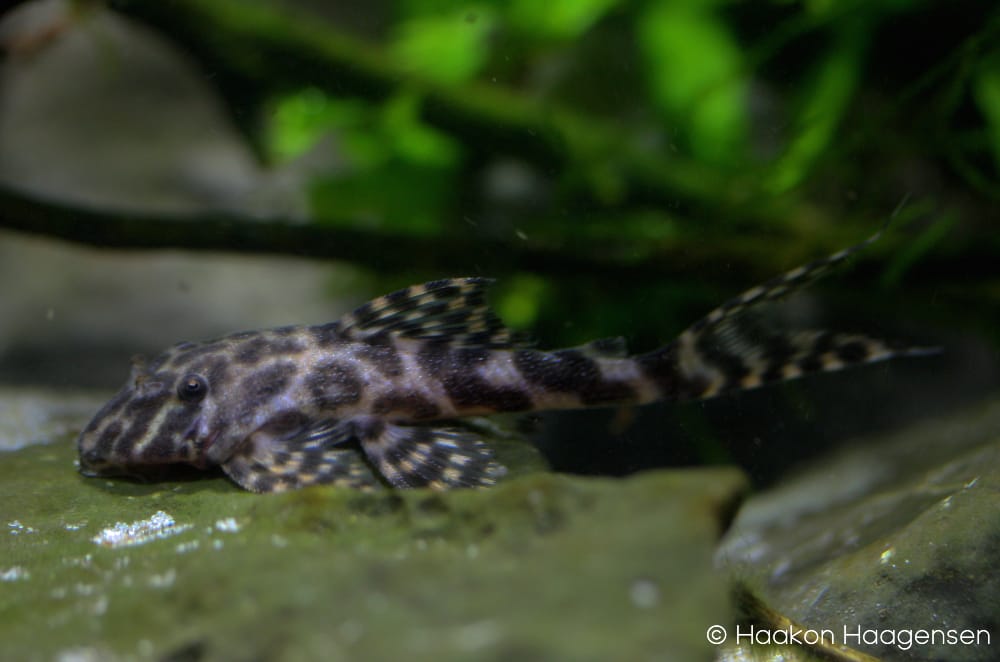
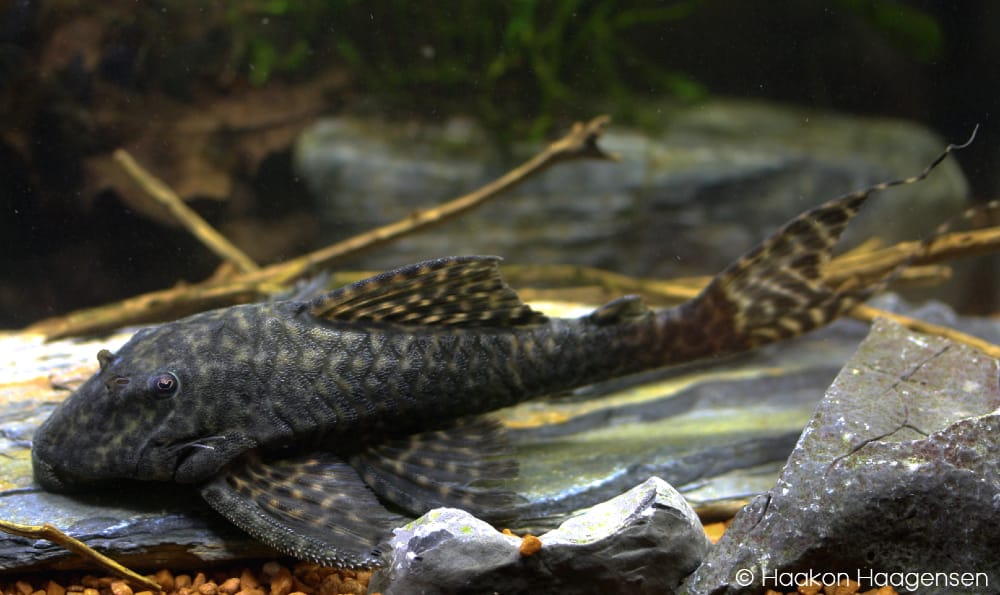
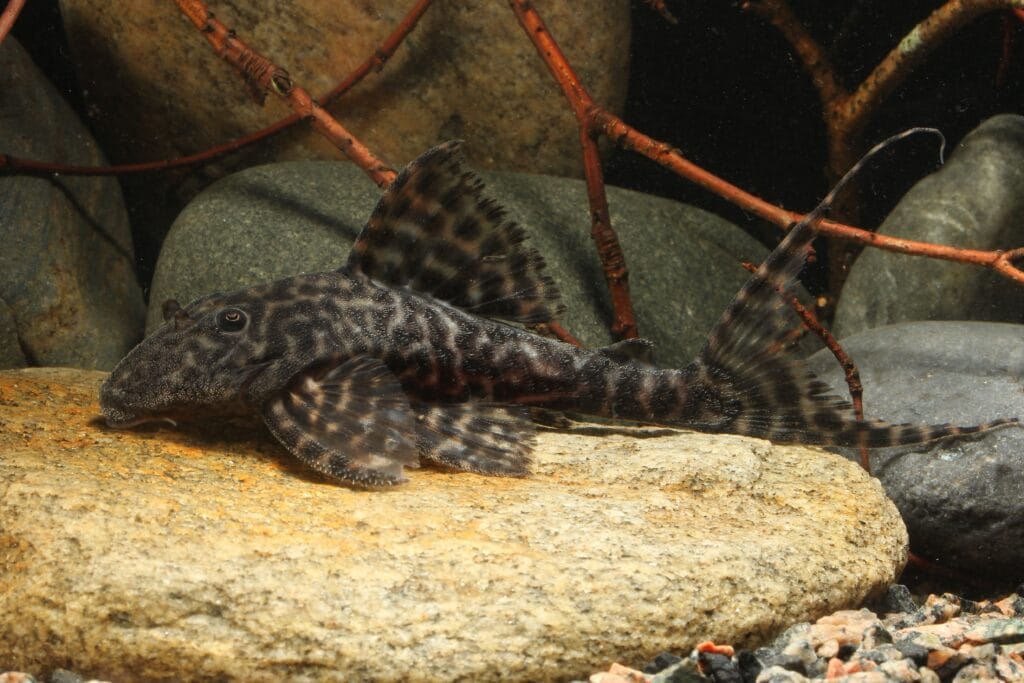
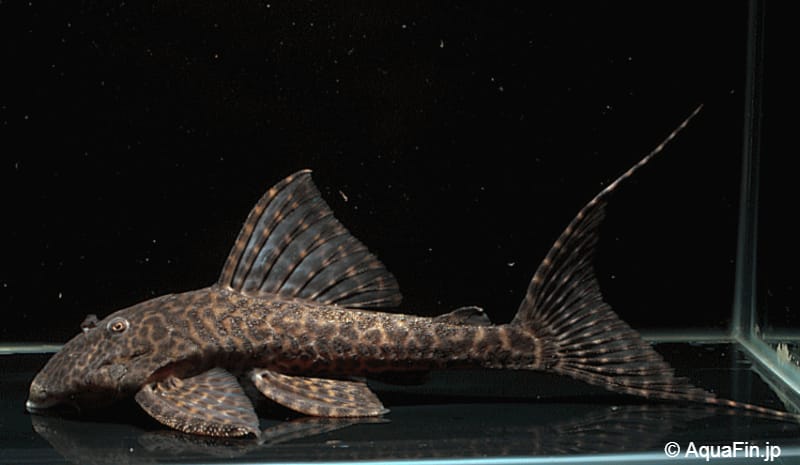
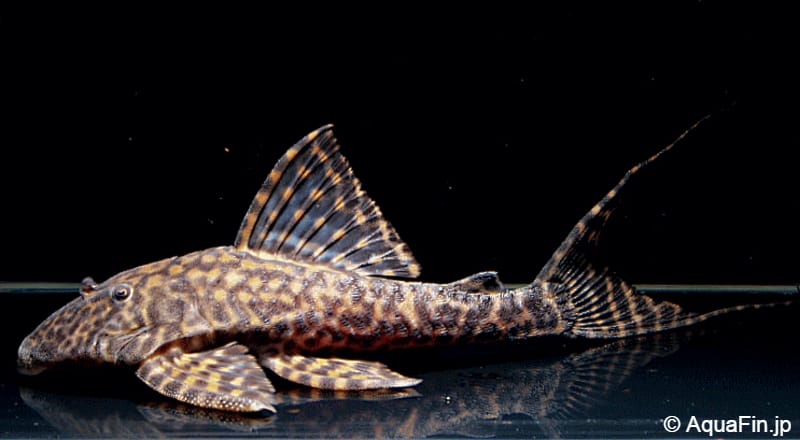
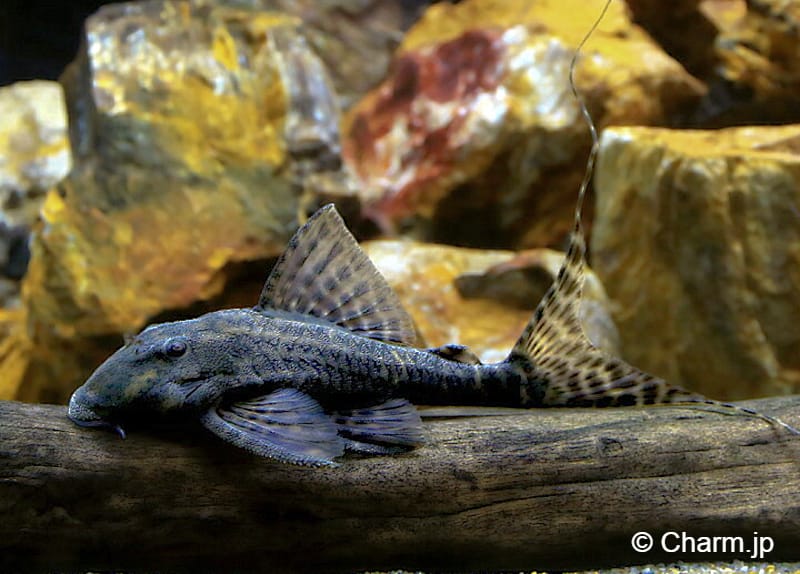
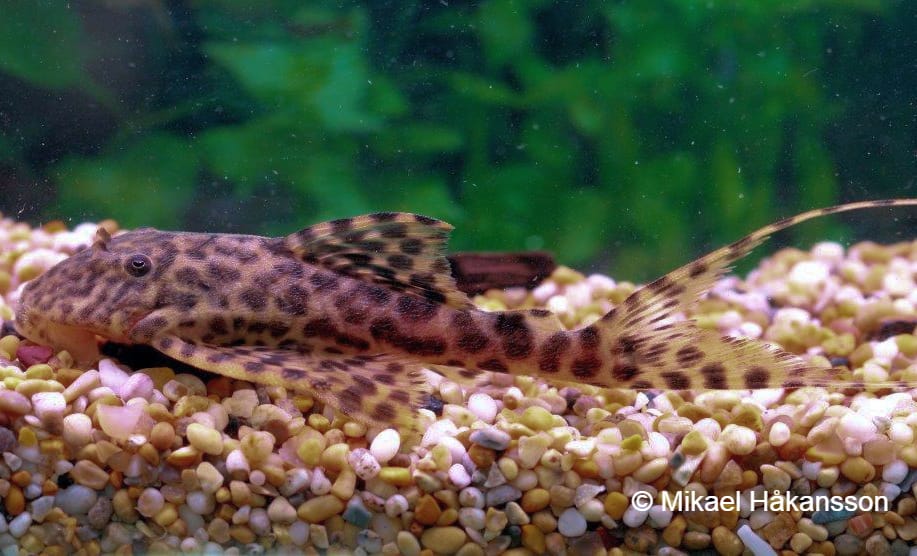
Among the wood-gnawing Panaqolus species, there are quite a few oddities that will never become very regular encounters in the hobby. The rarely traded L351 from Peru is one of these, although it certainly has its appeal to some dedicated Pleco keepers out there. This is a memmber of the subgenus Panafilus, the so-called “Lyretail Panaqolus” group. Especially when young, L351 has a fascinating look, with a mottled pattern and very long caudal filaments. As it ages and grows however, it loses much of its contrast – like with so many other Pleco species. Being one of the larger Panaqolus species, it’s often mistaken for being (and traded as) L350 – another dark Pleco collected in the same area. L351 is rarely kept, so very little data exists. It should however be kept like most Panaqolus species, in clean, well-filtered tanks with lots of wood to chew on. Males will develop the typical bristles along the backs of their bodies, and breeding, although unheard of, is very likely to occur in typical Loricariidae fashion.
Facts:
Name: Panaqolus sp.
Trade names: L351, Sachamama Pleco (Peruvian trade name)
Origin: Rio Huallaga, Peru
Maximum size: 18 cm / 7”
Panaqolus species are great aquarium fish. They need shelter in the form of wood and rocks, and if they feel safe they will venture out in search of food even during daytime. They prefer a vegetarian diet, and of course wood is essential for their digestion. Some crustaceans and insect larvae can be added to their diet, but a diet consisting of too much protein and too little vegetarian food can cause trouble. They are peaceful Plecos, but males can be quarrelsome over territories and food. Panaqolus species are slightly more challenging to breed than many other popular Plecos, but it’s usually all a matter of time and patience. When they do, they breed in typical Loricariidae manner with the male guarding the brood in his cave.
L351 can be confused with another Panaqolus species from Rio Huallaga, Peru: L329. When compared, L329 has bigger eyes set further apart, a more yellowish colouration and (when young) a more striped pattern. In exports from Peru, this species is called “Sachamama Pleco”, and it’s not rare to find bycatches in these shipments. L329 is sometimes erroneously exported as (and together with) L351, and both L329 and L351 can also occur as bycatch in shipments of the rather common Panaqolus changae (L226). Panaqolus dentex can also be in the mix sometimes.
More info:
